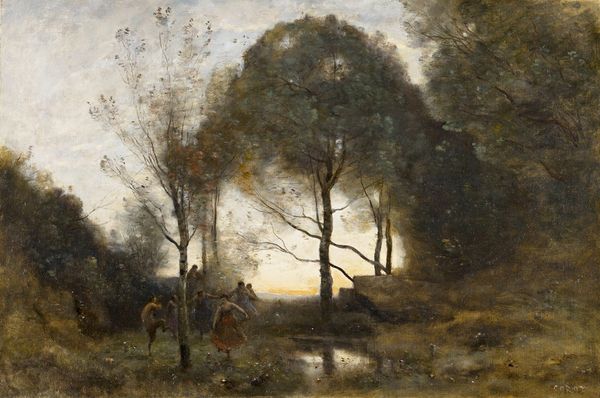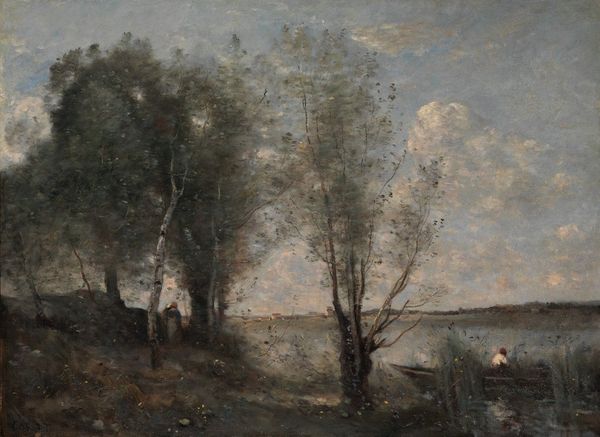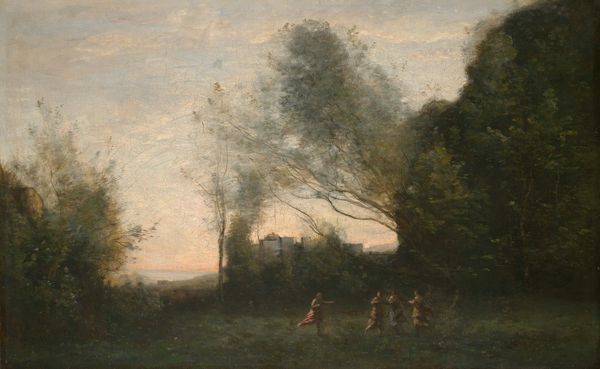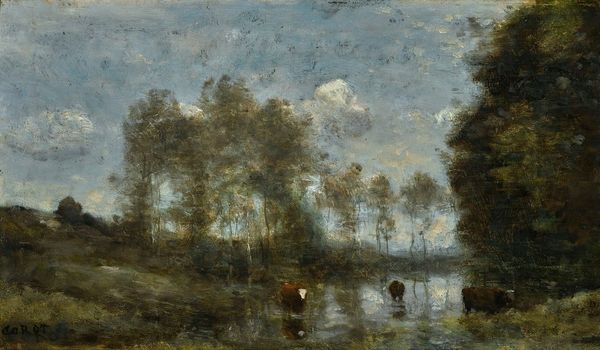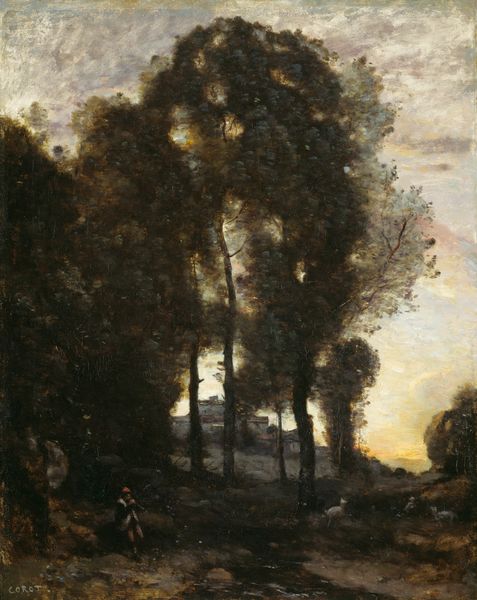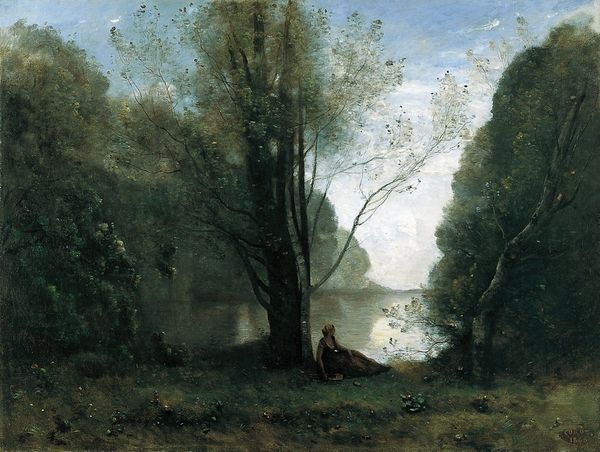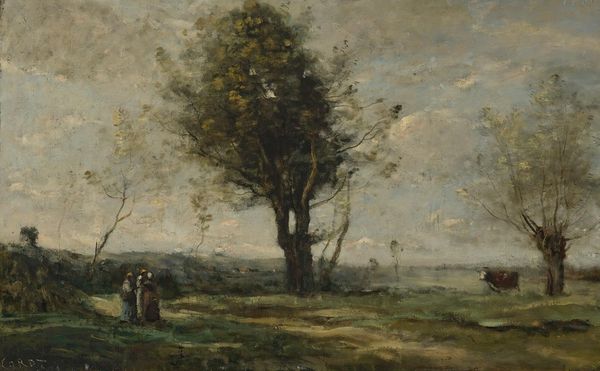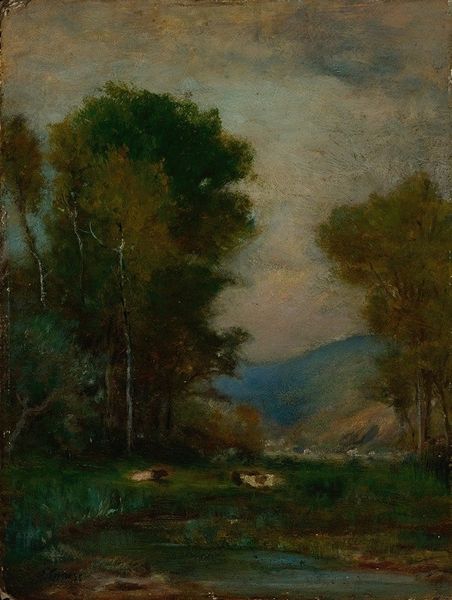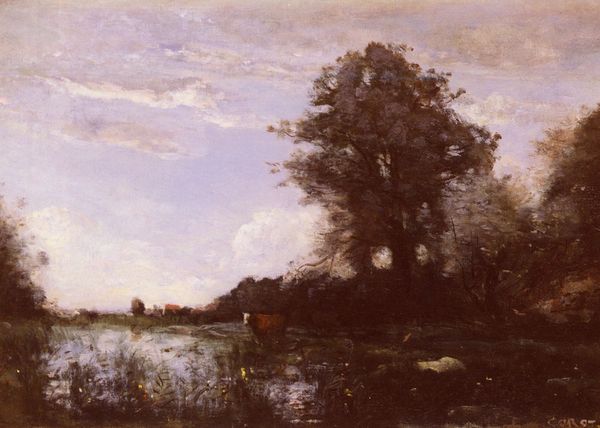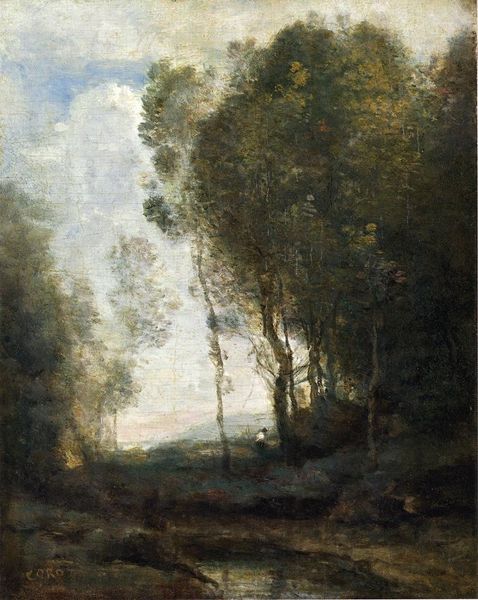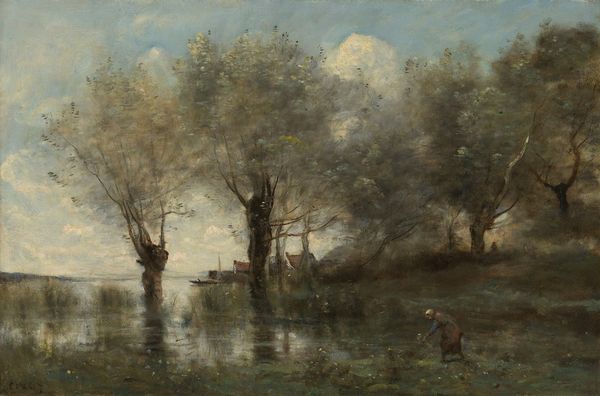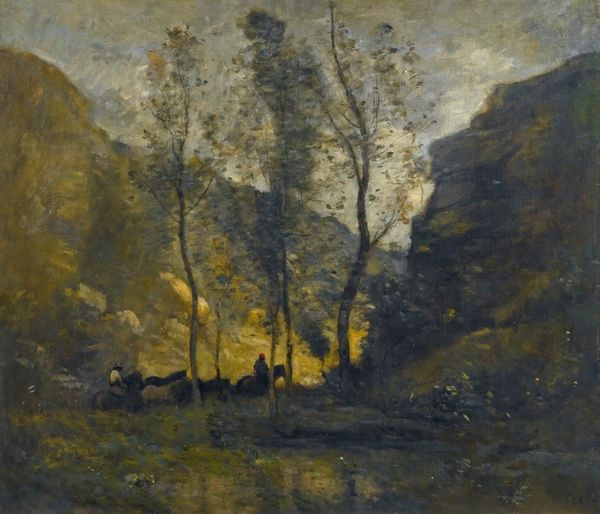
Copyright: Public Domain: Artvee
Curator: This painting, done in oils, is titled "Bathing Nymphs and Child." Camille Corot, a prominent artist during the Romanticism period, crafted it between 1855 and 1860. Editor: It feels… like a half-remembered dream. A stand of dark, brooding trees looms over these figures emerging like apparitions from the mist, all reflected in this still, silvery water. Is it me, or is there something unsettling about it? Curator: Interesting you say that. Corot's work, especially from this period, often merges idyllic landscapes with these classically-inspired figures, making it read as both timeless and staged. The “nymphs,” rendered as these rather indistinct nude women, partake in what's understood as some private, ancient rite. It's worth noting this revival of idealized landscapes coincides with growing urbanization in France, offering audiences an escape. Editor: An escape? Or an exoticization of a romanticized past that maybe never really existed? They’re half-shadowed, almost spectral… their faces obscured. It brings about a slightly melancholic feeling. The child sitting alone and almost hidden back there in the darkness compounds that, making you think this is a pretty unsettling space. Is this idyll haunted somehow? Curator: Perhaps a haunted idyll reflects anxieties of Corot’s time – as traditional rural life waned, these classically themed paintings functioned as reminders. Museums played a role then in shaping national identity by reminding audiences about this constructed heritage, all painted and displayed so people had a cohesive set of shared cultural values to fall back upon during times of change. Editor: That makes sense, but still… Corot does something beyond a simple picturesque image, I think. The heavy atmosphere, that very fluid brushwork he’s known for, brings the otherworldly, maybe a subtle darkness that can't be totally explained away by just historic context or some nostalgia for an idealized time that was really no utopia. He doesn't offer easy answers, and that complexity, it seems to me, is really part of what makes this scene linger. Curator: It is a painting that resonates, a visual poem rather than a clear-cut story. The historical and cultural factors, as you’ve rightly pointed out, add layers of understanding to its beauty. Editor: Yes, context gives more, enriches what's there... but then that slight disquieting feeling remains in your memory nonetheless, that beautiful gloom.
Comments
No comments
Be the first to comment and join the conversation on the ultimate creative platform.
